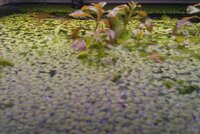zozo
Member
As Kadir already said, there is no white light, we only perceive it like that.. If you look at the spectrum color chart, then all these colors mixed together we perceive as white.
Actualy there are 3 basic colors Red, Green and Blue, like you see in the RGB leds of all colors are emitting 100% we perceive the invironmental color as white.
A blue led could contain several different materials coated with yellow phosphor.. (I seem to be out of date and said sulfur before but using phospor. How stupid of me. ). But still that doesn't change the fact they cover the broadest spectrum of all available light sources today.
). But still that doesn't change the fact they cover the broadest spectrum of all available light sources today. 
It's actualy the broad range of semi conductor materials available to produce colors making them perform so well.
Actualy there are 3 basic colors Red, Green and Blue, like you see in the RGB leds of all colors are emitting 100% we perceive the invironmental color as white.
A blue led could contain several different materials coated with yellow phosphor.. (I seem to be out of date and said sulfur before but using phospor. How stupid of me.
 ). But still that doesn't change the fact they cover the broadest spectrum of all available light sources today.
). But still that doesn't change the fact they cover the broadest spectrum of all available light sources today. It's actualy the broad range of semi conductor materials available to produce colors making them perform so well.
Last edited:



